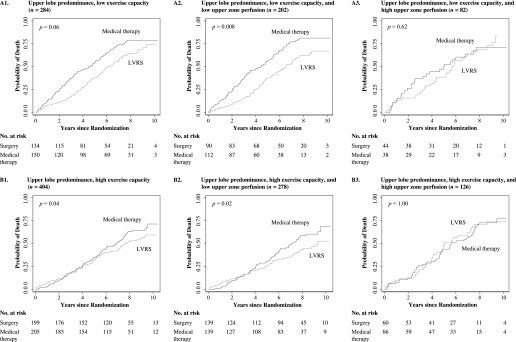Figure 1.
Kaplan-Meier survival curves after randomization for patients with upper lobe–predominant emphysema (n = 688). Among those with low exercise capacity (panel A1), mortality was lower with lung volume reduction surgery (LVRS) than with optimal medical management (risk ratio [RR], 0.66; P = 0.06). On further classifying patients by upper zone perfusion, this reduction in mortality was greater and was restricted to patients with low upper zone perfusion (panel A2: RR, 0.56; P = 0.008) unlike those with high perfusion (panel A3: RR, 0.97; P = 0.62). Among those with high exercise capacity at baseline (panel B1), reduction in mortality was again greater with LVRS (RR, 0.80; P = 0.04). On further classification by upper zone perfusion this reduction in mortality was restricted to patients with low upper zone perfusion (panel B2: RR, 0.70; P = 0.02), unlike those with high perfusion (panel B3: RR, 1.05; P = 1.00).

